1.Agra Fort
The Agra fort is also known as the Red Fort of Agra. It was built by the Mughal emperor Akbar in the 16tyh century. It is a magnificent structure enclosed within 2.5 km long walls.Some of the must to see and important structures inside the fort are Jahangir Palace, Khas Mahal, Diwan-i-Khas and two very beautiful mosques.
 2.Ajanta Caves
2.Ajanta Caves
Dated from the 2nd and 1st centuries B.C this was the first Buddhist cave monuments. More caves were added ti it during the Gupta period in the 5th and 6th centuries A.D. The caves are richly decorated and the paintings and sculptures there, depicting the Buddhist religious culture are true masterpieces.
3.Champaner-Pavagadh Archaeological Park
This site is comprises of palaces, religious buildings,water installations,agricultural structures etc of the 8th and 14th centuries. It is richly populated with unexcavated archeology, old and present heritages including chalcolithic sites of the prehistoric age. It has the remains of the capital(16th century) of Gujarat and an early Hindu capital hill fotress. 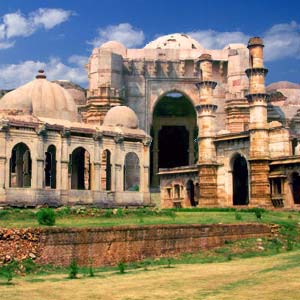
The Chhatrapati Shivaji Terminus, Mumbai, was once known as Victoria Terminus Station. The building, designed by the British architect F. W. Stevens, is a fine fusion of Victorian Gothic Revival architecture and Indian traditional architecture.

This place was once the Capital of Portugese. Now one of the world's imporatant heritage sites it houses a number of churches and convents. The most important of all the Church of Bom Jesus, which contains the tomb of St Francis-Xavier – illustrate the evangelization of Asia.
 6.Elephanta Caves
6.Elephanta CavesThese caves are located on an island close to Mumbai. They are filled with fine collection of rare beautiful indian art mostly dedicated to the cult of shiva.

7.Ellora Caves
These caves lie close to the Ajanta caves. It dedicated to three main religions - Buddhism, Hinguism and Jainism comprising of 34 monastries and temples. The monuments of Ellora date back to 600 A.D to 1000 A.D depicting the ancient civilization of India.

8.Fatehpur Sikri
This town was the capital of the Mughal Empire for some 10 years. Fatehpur Sikri literally means “THE CITY OF VICTORY”. It was ruled by emperor Akbar in the 16th century. The deserted town houses complex of monuments and temples, all in a uniform architectural style, including the Jama Masjid.

These temples were built by the great Chola rulers, the temples stretch all of South India and the neighbouring islands. It includes three massive Temples including the rihadisvara Temple at Thanjavur, the Brihadisvara Temple at Gangaikondacholisvaram and the Airavatesvara Temple at Darasuram which are of the 11th and 12th centuries.

10.Hampi
This was the last capital of the Kingdom of Vijayanagar which was the last Hindu kingdom. Its princes built Dravidian temples and palaces which attracted travellers and still draw people from far and near.

11.Humayun's Tomb
It was the first garden-tomb built in the Indian sub-continent in 1570. This was the major inspiration for the construction of the Taj Mahal.

Situated in the heart of Assam, this park is one of the last areas in eastern India undisturbed by a human presence. Kaziranga is known for the world's largest population of one-horned rhinoceroses, as well as many mammals, including tigers, elephants, panthers and bears, and thousands of birds

13.Keoladeo National Park (1985)
Once the duck-hunting reserve of the Rajput Maharajas, Keoladeo Ghana National Park is one of the major wintering areas for large numbers of aquatic birds. Here you can see some 364 species of birds, including the rare Siberian crane. The national park is also known as Bharatpur National Park.

14.Khajuraho Group of Monuments (1986)
Constructed by Chandella rulers between 950 and 1050 A.D, the temples are known for their erotic sculptures. Originally there were around 86 temples, but now only 20 temples categorized into three distinct groups and belong to Hindus and Jains.
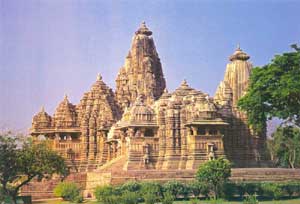
15.Group of Monuments at Mahabalipuram (1984)
Founded by the Pallava Kings, the monuments in the 7th and 8th centuries, this site is known especially for its rathas (chariots), mandapas (cave sanctuaries), giant open-air reliefs and the temple of Rivage, with thousands of sculptures to the glory of Shiva.

16.Mahabodhi Temple Complex at Bodh Gaya (2002)
One of the four holy sites related to the Lord Buddha, the Mahabodhi temple complex houses temples and the tree where Buddha supposed to took enlightenment. Mahabodhi Temple Complex draws Buddhists from across the globe.

17.Manas Wildlife Sanctuary (1985)
One of the important wildlife parks of India, Manas Wildlife Sanctuary is known for the good population of one-horned rhinoceros. Manas sanctuary is also home to a great variety of wildlife, including many endangered species, such as the tiger, pygmy hog and Indian elephant.

18.Darjeeling and Nilgiri Mountain Railways (1999)
The heritage site includes the Darjeeling Himalayan Railway in West Bengal state and Nigiri Mountain Railway in Tamil Nadu State. Built by the British, the railway passes through winding treks in mountains. Mountain railway was highly significant in facilitating population movement in the British colonial era and still today serve as a convenient mode of transport to hill stations.

19.Nanda Devi and Valley of Flowers National Parks (1988)
Nestled high in West Himalaya, in the state of Uttarkhand, Valley of Flowers National Park is noted for its meadows of endemic alpine flowers and outstanding natural beauty. This park is also home to rare and endangered animals, including the Asiatic black bear, snow leopard, brown bear and blue sheep. Set amidst rugged mountain Nanda Devi National Park also provides shelter to a variety of floral and faunal species. Both these national parj together encompass a unique transition zone between the mountain ranges of the Zanskar and Great Himalaya.
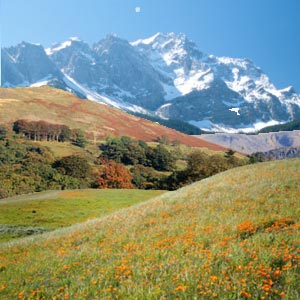
20. Group monuments of Pattadakal
Ruler by the Chalukyas in the 7th and 8th centuries, the monuments are known for architectural forms from northern and southern India. Here one can see an impressive series of nine Hindu temples, as well as a Jain sanctuary.

21.Qutub Minar
Built in the early 13th century, the Qutub Minar is 72.5 m high, tapering from 2.75 m in diameter at its peak to 14.32 m at its base. The tower is surrounded by structures of archaeological importance such as funerary buildings, notably the magnificent Alai-Darwaza Gate, the masterpiece of Indo-Muslim art (built in 1311), and two mosques, including the Quwwatu'l-Islam, built of materials reused from some 20 Brahman temples.

22.Rock Shelters of Bhimbetka
Set in the foothills of the Vindhyan Mountains, the Rock Shelters are five clusters of natural rock shelters, displaying paintings that appear to date from the Mesolithic Period right through to the historical period. The cultural traditions of the inhabitants of the 21 villages adjacent to the site bear a strong resemblance to those represented in the rock paintings.

23.Buddhist Monuments at Sanchi
The monasteries at situated 40 kms from Bhopal on a hill overlooking the plain. The site comprises of a group of Buddhist monuments (monolithic pillars, palaces, temples and monasteries) dating back to the 2nd and 1st centuries B.C. Buddhist Monuments at Sanchi is the oldest Buddhist site in existence and it was a major Buddhist centre in India until the 12th century A.D.

24.Sun Temple, Konarak
Located on the shores of the Bay of Bengal, the Sun temple is a monumental representation of the sun god Surya's chariot. Built in the 13th century, the sun temple is one of India's most famous Brahman sanctuaries. Its 24 wheels are decorated with symbolic designs and it is led by a team of six horses.

25.Sundarbans National Park
World’s largest delta, the Sundarbans covers 10,000 kms of land and water (more than half of it in India, the rest in Bangladesh). Sunderbans is renowned for housing world's largest area of mangrove forests. Here you can spot a number of rare or endangered species including tigers, aquatic mammals, birds and reptiles.
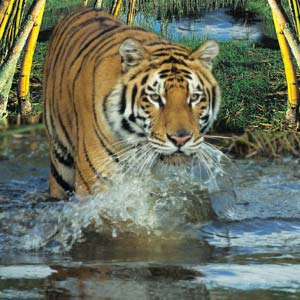
26.Taj Mahal
One of the seven wonders of the world, Taj Mahal is a picturesque mausoleum of white marble. Built in between 1631 and 1648 by Mughal emperor Shah Jahan in memory of his favourite wife, the Taj Mahal is the jewel of Muslim art in India.

27.Red Fort Complex (Delhi – 2007)
Situated in the heart of Old Delhi, the Red Fort Complex was built by Mughal Emperor Shah Jahan, as the palace fort of Shahjahanabad. Named for its massive red sandstone enclosing walls, the fort is home to a number of magnificent structures including Diwan – I – Khas and Diwan – I – Aam.
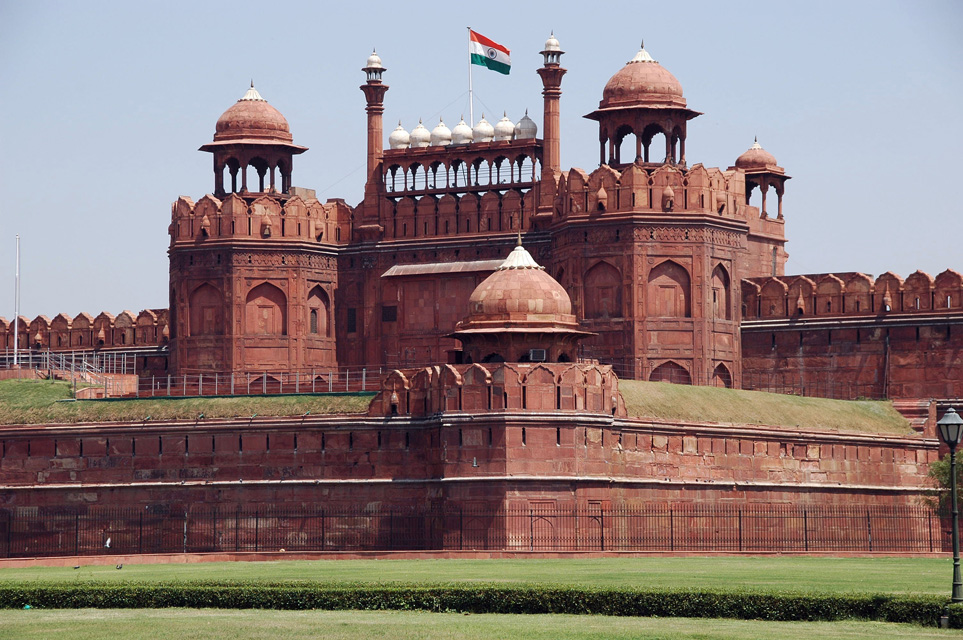
(source: article base)







